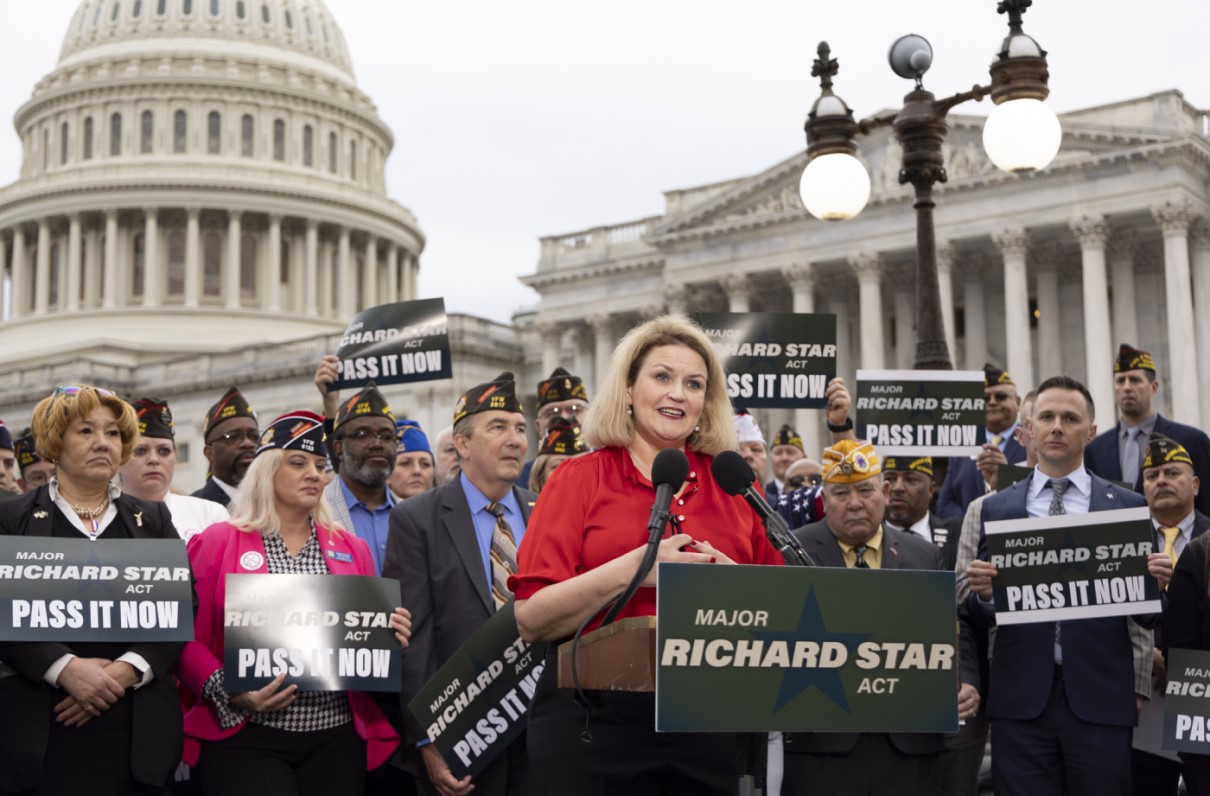Note from MOAA: Below, you'll find answers to some frequently asked questions about concurrent receipt, Chapter 61 military retirees, and MOAA's advocacy work on this critical issue. For more information, including the latest on advocacy efforts, visit MOAA's Concurrent Receipt Resources and Advocacy Updates page. Click here to take action now.
(Updated March 27, 2024)
Q. What is concurrent receipt?
A. Concurrent receipt refers to when a military retiree receives both retired pay and disability pay. Retired pay is for service and paid by DoD, while disability pay compensates for injury and is paid by the VA. Current law requires a reduction, referred to as an offset, in retirement pay for every dollar of disability received.
The concurrent receipt problem is an acknowledged injustice. In 2004, shortly after the invasion of Iraq, Congress granted concurrent receipt for those with a 50% or greater VA disability rating and with 20 or more years of service. Those with 40% VA disability and below and Chapter 61 retirees (see below) receive a reduced retirement payment. It is an unjust cost-saving measure that forces retirees to fund their VA disability with their earned retirement pay.
Q. What is Chapter 61?
A. Chapter 61 veterans are military retirees who were forced to retire from military service before reaching 20 years in service. The term “Chapter 61” refers to the chapter of the United States Code that defines the categories of medical separation and retirement from military service. There are more than 575,000 Chapter 61 retirees; 52,304 of them receive Combat-Related Special Compensation (CRSC). Learn more about CRSC from the Defense Finance and Accounting Service (DFAS) and from MOAA.
Q. Doesn’t CRSC take care of all the combat-related Chapter 61 retirees?
A. No. CRSC may cover the entire offset for those with a high DoD combat rating, but for those with a large gap between combat ratings and disability ratings with greater years of service, CRSC does not cover the loss.
As an example, consider an O-4 (Army/Marine/Air Force major, or Navy lieutenant commander) injured in combat and forced to medically retire at 14 years of service with a 50% combat rating from DoD and 100% VA disability.
- Under current law, that officer’s retired pay would be eliminated by the VA waiver. The officer would receive $1,075 in CRSC along with $3,738 in VA disability pay, for a total of $4,813.
- After passage of the Major Richard Star Act, that officer would receive $2,730 in longevity pay and continue to receive $3,738 in VA disability pay, for a new total of $6,468 – an additional $1,655 a month.
[RELATED: Understanding Concurrent Receipt]
Q. What are the barriers to passing the Major Richard Star Act?
A. Lawmakers concerned over any increased spending. More than two-thirds of House and Senate members support the Major Richard Star Act, but some have concerns over cost because of our growing national debt.
The budgetary control rule CUTGO requires elected officials to identify how they will keep mandatory spending at the same levels by identifying something to cut in order to pay for new legislation. The FY 2025 DoD budget request may result in a reduction to DoD personnel accounts. The purpose of the Major Richard Star Act is to remove the offset that is in place to achieve cost savings.
Achieving savings by reducing DoD retired pay for combat-injured veterans with an offset is an awful injustice and sends the wrong message to the all-volunteer force … especially during ongoing recruiting challenges.
Q. Who does the Major Richard Star Act actually help?
A. The Major Richard Star Act (H.R. 1282 | S. 344) would authorize concurrent receipt for approximately 52,304 combat-related Chapter 61 retirees. The legislation would make these combat-injured veterans eligible for the existing DFAS CRSC/CRDP open season and allow them to choose between CRSC or Concurrent Retirement and Disability Pay (CRDP), depending on which is financially beneficial given each individual’s tax and family situation. At present, only those with more than 20 years of service are eligible for the open season.
[TAKE ACTION TODAY: Ask Your Lawmakers to Support the Major Richard Star Act]
Q. What is the cost?
A. Some lawmakers and staffers point to the projected cost of the Major Richard Star Act ($9 billion over 10 years) as a reason it has not moved forward. Our estimate is that it is likely half of that cost and similar to the cost of the removal of the so-called “widows tax,” a MOAA-championed effort that ended the Survivor Benefit Plan (SBP)-Dependency and Indemnity Compensation (DIC) offset.
There are two main talking points to discuss with lawmakers concerned over cost.
- The wrong message: Cost should not be a concern for those injured in combat. Our combat-injured veterans earned their retirement pay through extraordinary sacrifice. The concern over cost is especially damaging during our current recruiting challenges and erodes trust.
- The wrong math: The Congressional Budget Office (CBO) estimate fails to account for the existing DFAS CRSC/CRDP open season and a phase-in, which will significantly reduce the cost of the legislation. It assumes all 52,304 combat-injured veterans who’d be eligible to switch from CRSC to CRDP would do so. It’s not a guarantee — about half of the veterans could benefit; the rest may choose to retain tax-free CRSC at no additional cost to the government. The Major Richard Star Act is not retroactive, does not include back pay, and is actuarily sound.
Q. Can the Military Retirement Trust Fund pay for concurrent receipt?
A. MOAA does not advocate for a “pay for” because only legislators and professional staff members have the visibility on funding options. We believe the costs should be borne by all Americans, not just targeted to other beneficiaries through offsets or reductions in their own service-earned benefits. The purpose of the Military Retirement Trust Fund is to pay for retired pay, and Congress will have to determine how to increase DoD annual investments into the trust fund.
Q. Does MOAA support concurrent receipt for all?
A. MOAA supports the long-term advocacy goal for concurrent receipt and has supported larger bills such as H.R. 333 and H.R. 303. The cost of these larger bills is the obstacle to progress on concurrent receipt and why there has been little progress for 20 years. An incremental approach that breaks up the categories of concurrent receipt into smaller, less costly objectives has the potential to garner small objectives in route to long-term concurrent receipt advocacy goals. Of those who were left behind in concurrent receipt legislation 20 years ago, our combat-injured veterans have the greatest need after the long wars in Iraq and Afghanistan.
Q. How can I find out if my senators/representatives support concurrent receipt?
A. Congress.gov lists the co-sponsors of H.R. 1282 and S. 344.
MOAA Knows Why You Serve
We understand the needs and concerns of military families – and we’re here to help you meet life’s challenges along the way. Join MOAA now and get the support you need.

